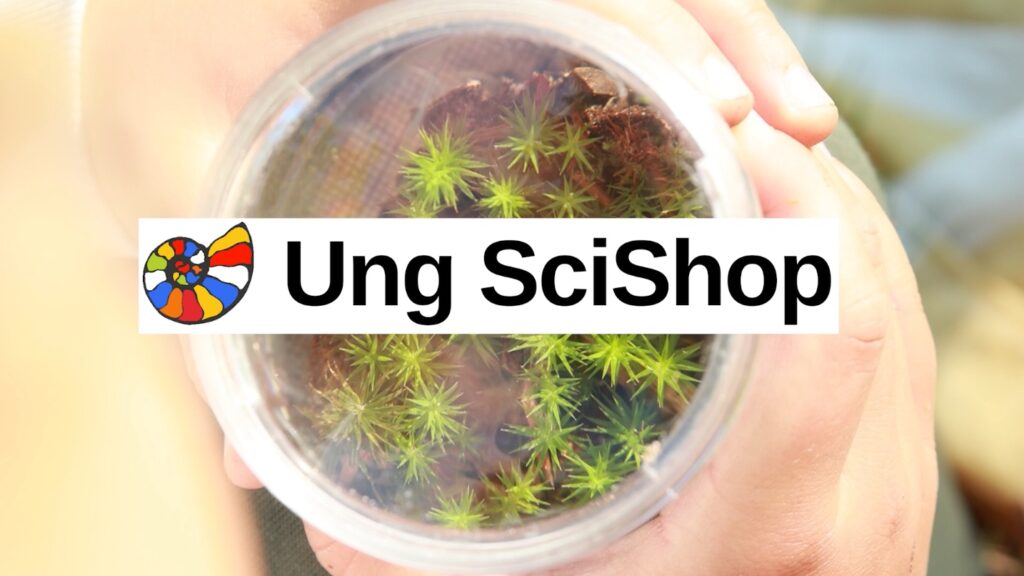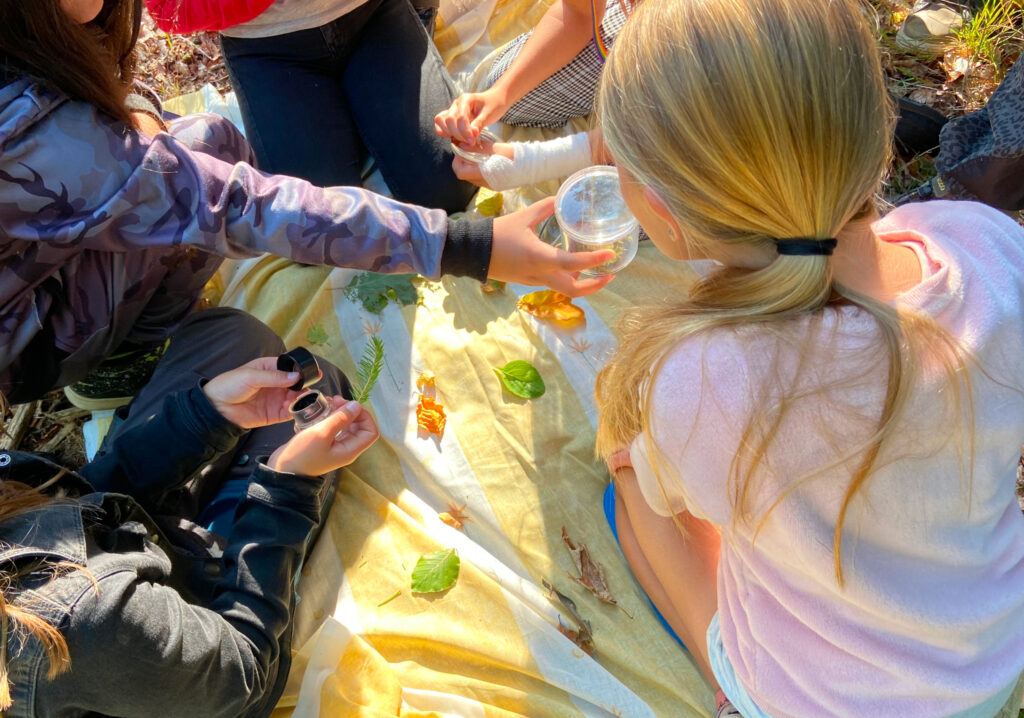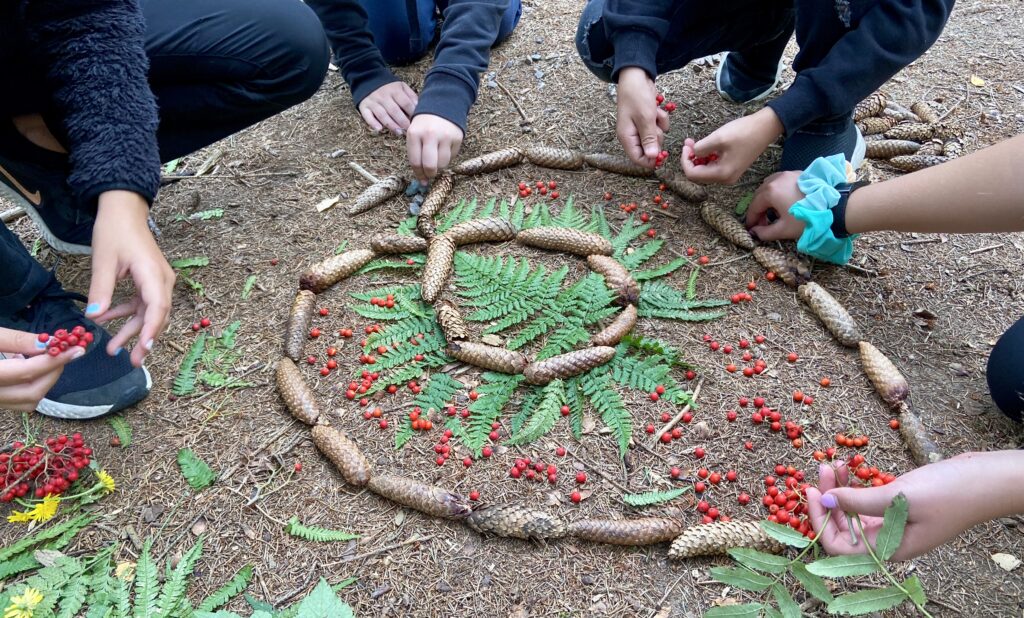In 2019 Kerstin Jakobsson from the non-profit association ARNA, Art and Nature, participated in a workshop on Science Shops run by Public & Science as part of the EU SciShops project. As a result, the Science Shop model inspired the establishment of Ung SciShop (Young SciShop) providing a platform to address young people’s questions about sustainable development. Now as the project is coming to its end, we catch up with Kerstin to learn more about their experiences.

Firstly, please explain about the origins of Ung SciShop and what drew you to the Science Shop model.
Since 2011, ARNA has been working on projects that combine nature and art, involving young people from the Storkriket area. ARNA’s positive experiences from these projects, along with young people’s growing concern about climate change, inspired us to create the Ung SciShop. The goal was to strengthen the role of children and young people in democratic societal development. The project aimed to develop a model that sparks curiosity about the interconnections in nature, enhances knowledge about research, and empowers young people to ask questions that influence the future. After studying various forms of citizen science and open science, we chose the science shop model. A workshop run by Public & Science in 2019 provided us with valuable information about science shops, which we used as a basis for our project application to the Swedish Inheritance Fund (Allmänna arvsfonden).
Tell us more about the approach of UngSciShop and how it has been engaging young people in sustainability issues.
In the Ung SciShop model, evidence-based knowledge is combined with creative working methods to strengthen young people’s connection with nature and enhance their problem-solving and innovative thinking skills. The project has focused on practically testing and developing a range of ideas for the model with primary, middle, and lower high school classes. This included investigating the intersection between local and global climate issues with young people in Storkriket and working out at what age primary school children can start to engage in meaningful exchanges with universities.
Over three autumn terms, Ung SciShop collaborated with various classes and their teachers in Storkriket—starting with middle school, then primary school, and finally high school classes. The resulting model is based on thematic work, such as water as a resource, and practical activities carried out in four stages: building basic knowledge, a creative outdoor day for deeper understanding, connecting local and global perspectives, and disseminating experiences. A central component of the model is the creative outdoor days, which encourage new ways of thinking. These are followed by meetings between primary school pupils, university students, and researchers at Lund University to discuss challenges and propose solutions to environmental issues.

ARNA, Art and Nature is an non-profit association that explores the relationship between nature and man through art. How have you incorporated this cultural dimension into UngSciShop?
Being able to contribute to societal development involves being a bridge between what is already known and new innovation. At ARNA, we operate in this intersection, and culture provides us with a diverse set of tools. We are also convinced that innovation and transformation happen when the whole triad of head, hand, and heart is involved. Therefore, we are pleased that the European Commission highlights the same triad in its new framework for developing sustainability competencies, GreenComp, and also recognises cultural working methods as effective.
In the Ung SciShop project, we often chose Land Art as a working tool. Land Art is an art form where temporary artworks are created using natural materials in outdoor environments, which work well in nature-focused projects.

During the project, did you encounter any challenges along the way?
For Ung SciShop, it has been an exciting challenge to both develop and test a working model with school classes of different ages while also bridging the cultural gap between primary schools and universities. The team found it more challenging than anticipated to develop questions with the schoolchildren in collaboration with the university because good questions need time to be formulated and then time to be explored. Gradually, the importance of interdisciplinary schoolwork and having a clear division of roles among the different collaborators became clear.
These challenges meant that the project did not progress as far as we had hoped in establishing a youth-oriented science shop connected to a UNESCO biosphere area. However, the next step is to select specific classes for ongoing collaboration.
What would you see as the main successes of the project?
The process of developing Ung SciShop’s working model in collaboration with LUCSUS at Lund University has been incredibly rewarding, and it is fantastic that the model also aligns so perfectly with GreenComp, the sustainability competencies framework developed by the EU. We are also delighted to see that the primary schools Ung SciShop has worked with are open to continuing the collaboration and that the middle school in Sjöbo Municipality wants to further develop their partnership with LUCSUS. As the project concludes, it is very positive that the biosphere candidature is starting to work on a youth-oriented platform in Storkriket.
The project is now coming to an end in 2024. What are your hopes for the future?
Storkriket is a candidate to become Sweden’s eighth Unesco biosphere reserve and our vision is that it will be innovative in its work for a sustainable future together with children and young people.The foundation for such an innovation platform has been established through the experiences of the Ung SciShop project in collaboration with LUCSUS at Lund University. As we continue to develop, we envision combining the Ung SciShop model with the GreenComp framework for sustainability competencies. Together, they provide both an international framework and a practical working model that emphasise science as the foundation for sustainable development. Moreover, they highlight that the diversity in people’s curiosity and different approaches to gaining knowledge are essential for enriching future research.
Further information:https://ungscishop.se/en/home
EU SciShops
Public & Science Sweden was a partner in SciShops, a EU-funded Horizon 2020 project (2017-2020) that sought to promote the growth of community-based participatory research and Science Shops across Europe. Public & Science Sweden contributed knowledge and experience to inform the development of Ung SciShop and its funding application, and continues to provide information and advice to organisations in Sweden interested in setting up Science Shops.
ARNA
The association ARNA, Art and Nature, works through art to promote innovation and a sustainable future. Its focal point is the future UNESCO Biosphere Reserve, Storkriket, in Skåne. Here, it develops projects that practically explore how the cultural dimension can contribute to societal transformation and sustainable development. www.arna.nu
LUCSUS
LUCSUS is an interdisciplinary research, education, and collaboration centre at Lund University working to understand and address complex and pressing sustainability challenges. www.lucsus.lu.se
Storkriket’s Biosphere Reserve Candidacy
For over 50 years, UNESCO, the UN’s organisation for culture, science, and education, has designated biosphere reserves worldwide as model areas for sustainable development. Through collaboration and local engagement, biosphere reserves test and demonstrate new strategies, ideas, and actions. In this way, biosphere reserves generate knowledge, experience, and innovations for a more sustainable future. Today, there are over 700 biosphere reserves worldwide, with seven located in Sweden. Storkriket aims to be designated as Sweden’s eighth biosphere reserve in 2025. www.storkriket.se
Watch a short film about the project below:
